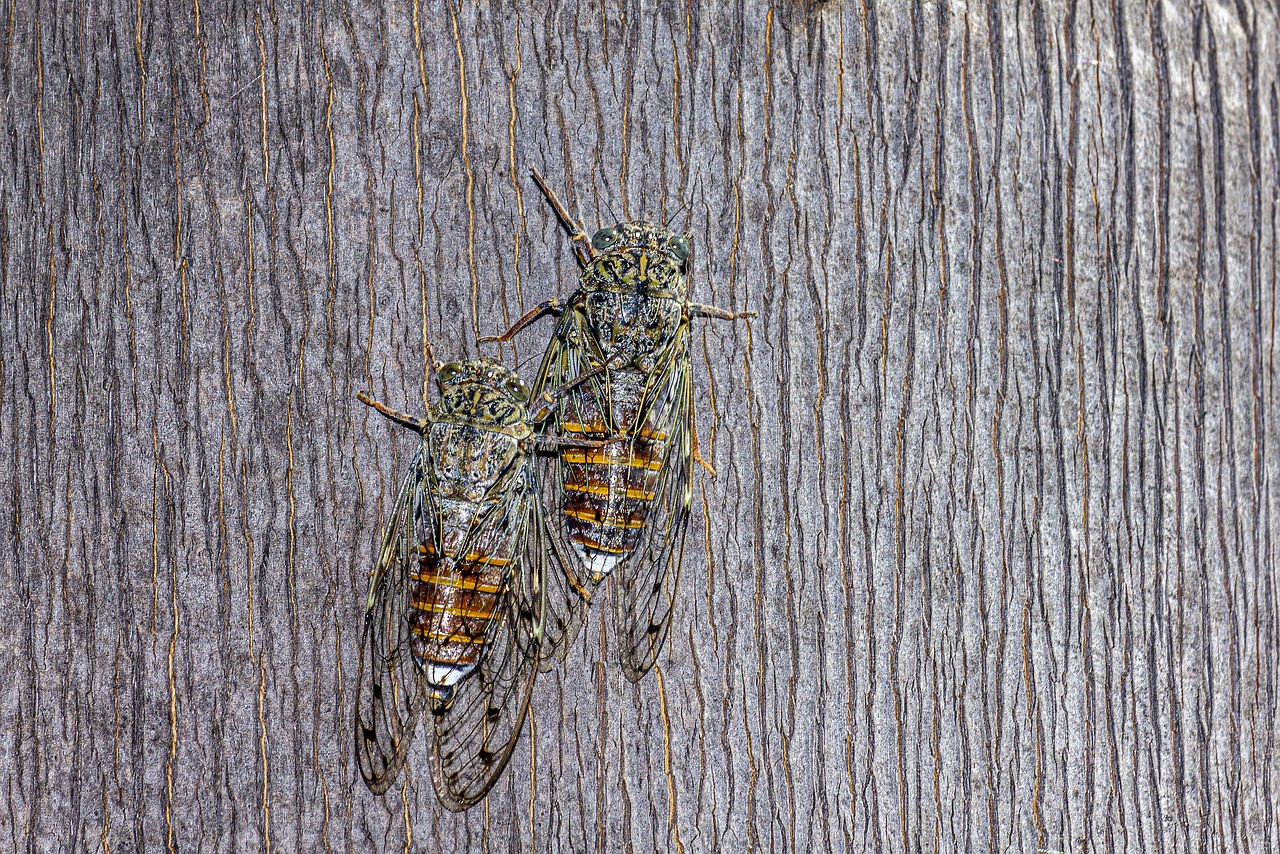Advertisements
The Ash Cicada (Cicada orni) is a fascinating insect species found primarily in southern Europe and parts of Asia. Known for its distinctive song and striking appearance, this cicada plays an important role in the ecosystems it inhabits. Here’s an overview of the Ash Cicada:
Description
- Appearance: The Ash Cicada is medium-sized, with adults typically measuring 25-35 millimeters in length. They have a robust, elongated body, a broad head with large, prominent eyes, and transparent wings that are intricately veined.
- Coloration: Their bodies are usually brown or gray, with various patterns and markings that provide excellent camouflage against tree bark and leaves. The wings are transparent with a slight iridescence.
- Sound: Male Ash Cicadas are known for their loud, rhythmic songs, produced by specialized structures called tymbals on their abdomen. These calls are used to attract females and are a characteristic sound of summer in many regions where they are found.
Habitat
- Distribution: Cicada orni is widely distributed across southern Europe, including countries like Italy, Greece, and Spain, as well as parts of North Africa and the Near East.
- Preferred Environment: They are typically found in warm, dry habitats such as Mediterranean woodlands, scrublands, and sometimes urban areas with sufficient tree cover. They prefer trees like ash, oak, olive, and pine, where they can feed and lay their eggs.
Life Cycle
- Eggs: Females lay eggs in small slits they cut into the bark of tree branches. After a few weeks, the eggs hatch into nymphs.
- Nymphs: The nymphs drop to the ground and burrow into the soil, where they will spend several years (often 2-5 years) feeding on the sap from plant roots.
- Adults: After completing their development, nymphs emerge from the ground, molt one last time, and become adults. Adult cicadas typically live for a few weeks to a few months, during which time they mate and continue the cycle.
Behavior
- Feeding: Both nymphs and adults feed on plant sap. Nymphs extract sap from underground roots, while adults feed on sap from the branches and twigs of trees.
- Singing: Only male cicadas sing, producing a distinctive and loud sound that is used to attract females. The song varies between species and can sometimes be used to identify different types of cicadas.
Ecological Role
- Food Source: Cicadas are an important food source for many predators, including birds, mammals, reptiles, and other insects. Their emergence in large numbers can provide a significant food pulse to the ecosystem.
- Soil Aeration: The burrowing activity of nymphs helps to aerate the soil, which can benefit plant roots and contribute to soil health.
- Nutrient Cycling: When cicadas die, their bodies decompose and add nutrients to the soil, supporting plant growth.
Interesting Facts
- Mass Emergence: In some regions, cicadas, including Cicada orni, can emerge in large numbers, creating a phenomenon known as mass emergence. This can be a spectacular sight and sound, as millions of cicadas take to the trees simultaneously.
- Cultural Significance: Cicadas have been a part of human culture and folklore for centuries. In many cultures, they are seen as symbols of rebirth and immortality due to their life cycle and emergence from the ground after years of development.
Conservation
- Threats: While Cicada orni is not currently considered endangered, habitat destruction and pesticide use can impact their populations. Protecting their natural habitats is crucial for their conservation.
- Research: Studying cicadas can provide valuable insights into ecosystem health and the impacts of environmental changes. Their sensitivity to habitat conditions makes them useful indicators for ecological research.
The Ash Cicada, with its distinctive song and important ecological role, is a fascinating insect that adds to the biodiversity and natural beauty of its habitats. Whether you’re hearing their summer chorus or observing their life cycle, cicadas like Cicada orni offer a unique glimpse into the complex interactions within ecosystems.
Visited 210 times, 22 visit(s) today
Views: 384
Subscribe to the newsletter:
